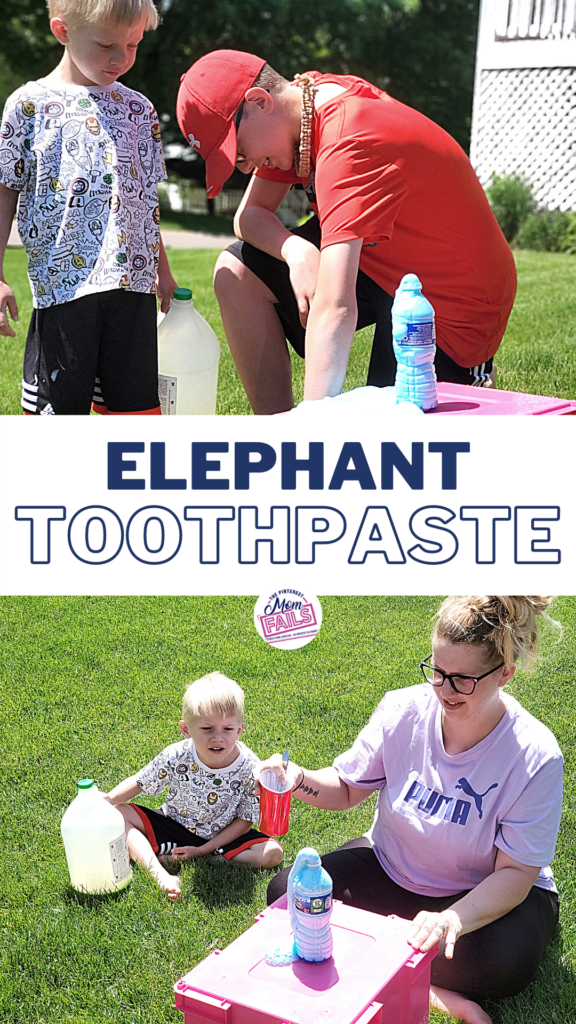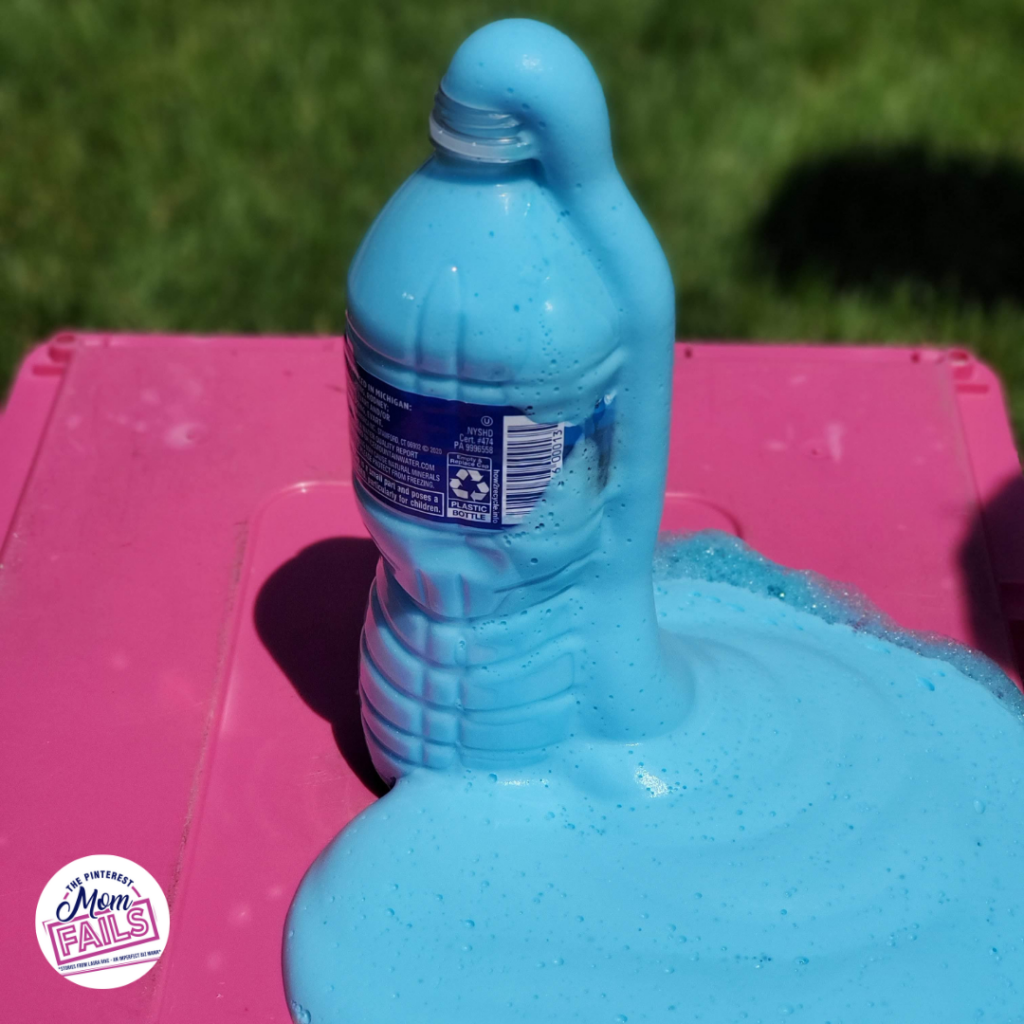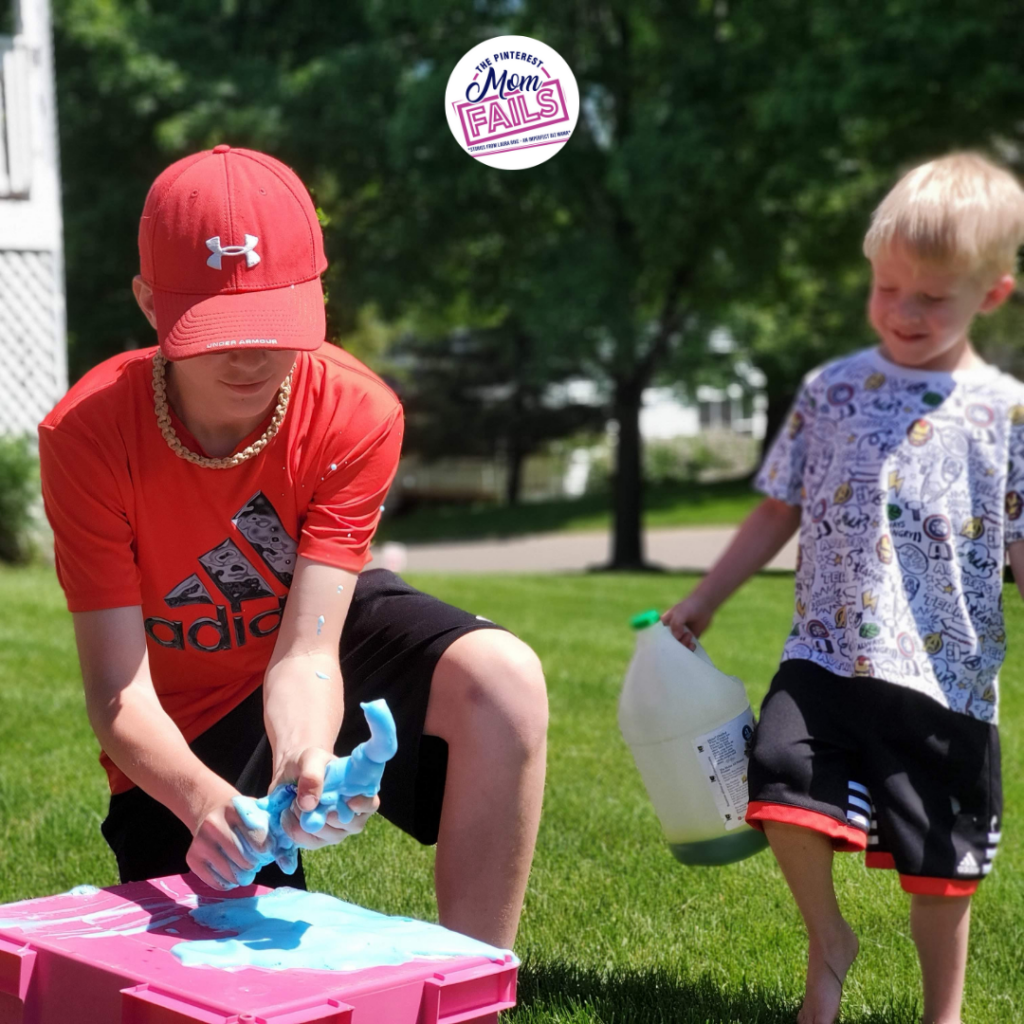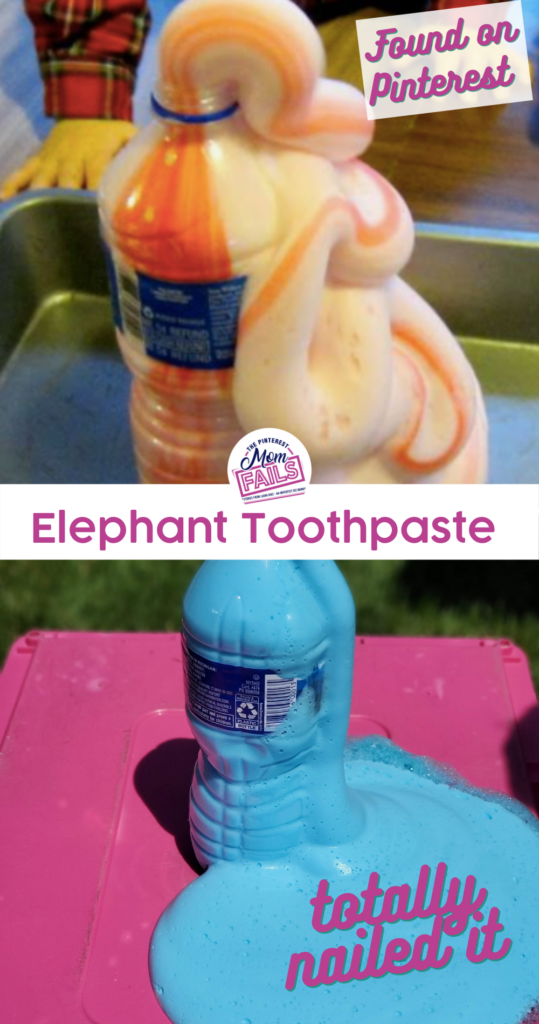Elephant Toothpaste is a fun experiment that kids can do to learn about the different properties of acids and bases. It’s also a great way to explore how soap works!
My family always likes to get creative and we are not afraid to have a few Pinterest Mom Fails along the way so I wanted to share with you how to make elephant toothpaste, as well as some science experiments you can try with it.

This was a fun activity for my older kiddo too! Sometimes they don’t know what else to do with the “nothing” feeling and this can be one way of getting them out of the house while still doing things that are productive. It’s also been said as a great boredom buster and it will help keep their minds sharp since we all know how hard it can sometimes be to come up with new ideas on their own. My oldest (thirteen years old) loved when we would try different sizes of bottles, mixture of materials and come up with our own Elephant Toothpaste hypothesis before we actually started the ‘explosions’!
Materials needed:
- dish soap (liquid or gel)
- vinegar (acetic acid)
- baking soda (sodium bicarbonate)
- quick rise yeast
- food coloring

Instructions to make elephant toothpaste:
Fill a container with about an inch of water.
Add two teaspoons of liquid or gel dish soap into the water and mix well.
Then get some yeast from the fridge–the kind that comes in cans like grape juice does!–and pour it into two cups filled with water (you’ll need to use about two tablespoons of yeast for each cup).
Drizzle in food coloring for some extra fun colors into the container with water and soap.
Put the cups on a table and have your child stand or sit at that same table *Again we opted to do this one outside but depending on the weather you can do inside too, I would just suggest doing it inside of a crate or something so the clean up is still easy.
Finally, pour your yeast mixture into the container and stand back!

What is elephant toothpaste?
The ‘elephant toothpaste’ is actually plain old water but with some yeast mixed into it so that when you mix the two together quickly, bubbles come out of solution similar to how oxygen bubbles come out of solutions like hydrogen peroxide or sulfuric acid. This experiment also teaches them about acceleration due to gravity as well as surface tension which will stick your elephant’s trunk on top of its head! Who knew learning could be this much fun?

Fun ideas to try with the elephant toothpaste experiment:
- Try adding something like apple juice or baking soda to the mixture and watch what happens! (the foam will be fizzy!)
- What other food coloring can you add? How does it affect how much bubbles there are? Take pictures of your experiment for evidence!
- Squeeze some dish soap into the container before pouring in vinegar and see if this changes anything about the color, amount of bubbling, etc. You might also want to take pictures again as evidence.
- If possible, use different types of dish soaps such as gel vs liquid – how do they compare? Which one makes more or less bubbles than the other type?

Benefits of doing an elepahnt toothpaste science experiment with your kids:
- Kids love to explore and play with this mess! They will learn about acids, bases, and soap while having a blast. (And you’ll have less dishes to clean!) We did ours outside in the front yard, and while my husband was worried about our grass with soap, we didn’t see any issues with it in the weeks to come. This was also an impromptu way to keep the ‘experiment going’ when we would ask the kiddos to check and see if the explosion was causing a reaction to the grass yet.
- This is a great way for kids to get some science experiments done without any adult assistance or special equipment. You can make it as messy or simple as you want – let them experiment how much they want!
- It’s low cost and accessible at home instead of going out somewhere like the Science Museum in order to do these types of activities. Plus there are no restrictions on when parents need their children back home by either time or age so that makes this activity even more fun. There’s no need to stress about when to leave or how much you spend.
- Another low cost science experiment to try that my kids also loved (and was less messy) is magnetic slime!

Why we had some Pinterest fails with this Elephant toothpaste craft:
- If there isn’t enough dish soap in your container, then no bubbles will form because there needs to be some water mixed in order for the reaction take place – just like any other science experiment.
- If you add too much vinegar, it can create a reaction that is more violent than desired and the whole thing might just explode! It’s best to start with adding one tablespoon of vinegar at a time – then wait about 30 seconds before adding another teaspoon or two if needed.
- If there isn’t enough baking soda in your container, bubbles won’t form again because something needs to be dissolved for the reaction to happen – like any other science experiment. You want to fill up your container half way full with some baking soda and make sure not all of it gets mixed into the solution quickly since you need a little bit left over on top so that when you pour it out stuff doesn’t overflow onto anyone nearby.
